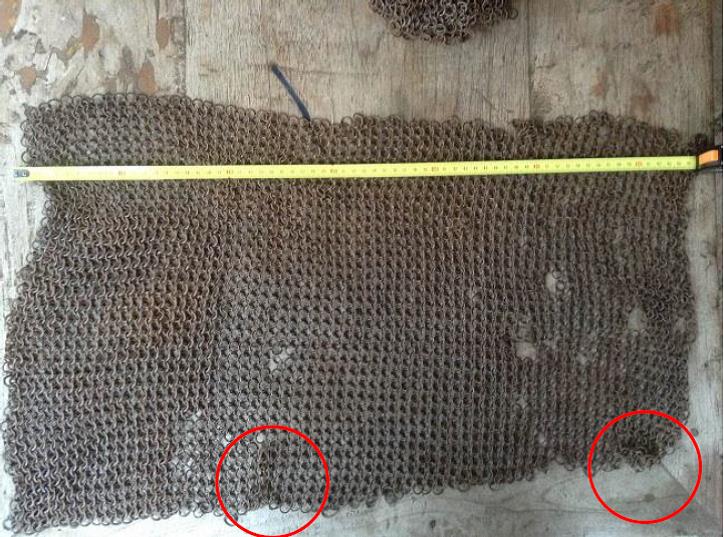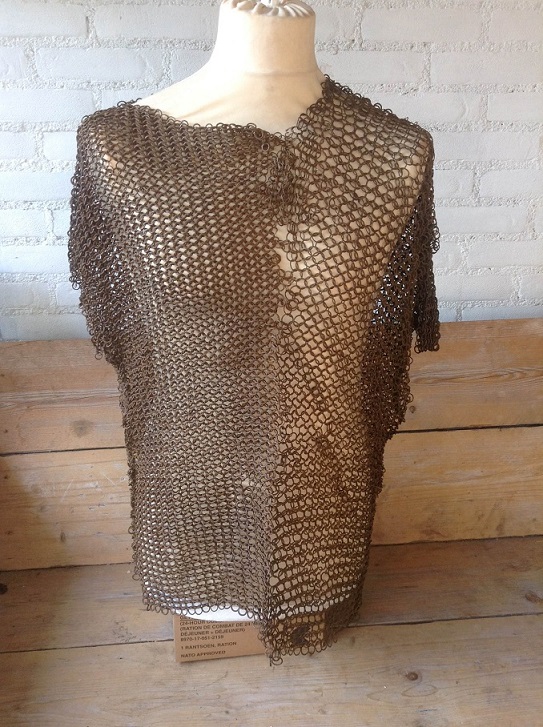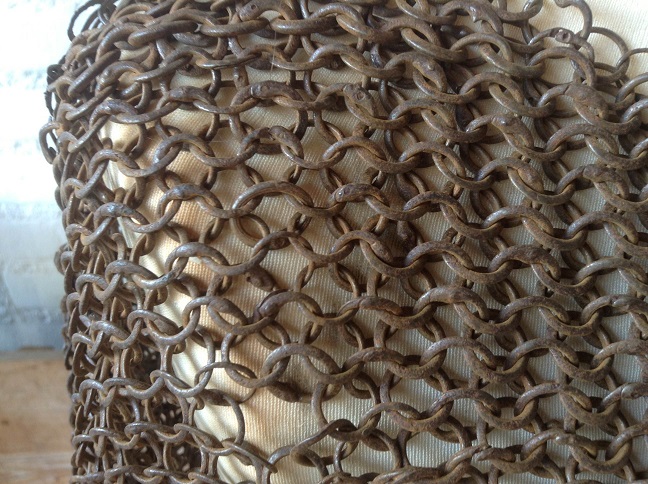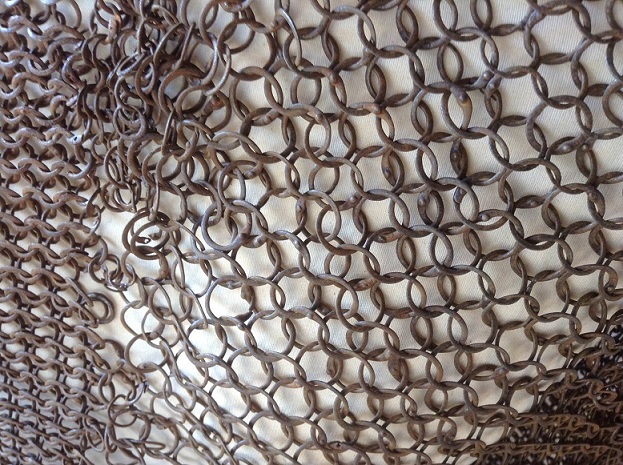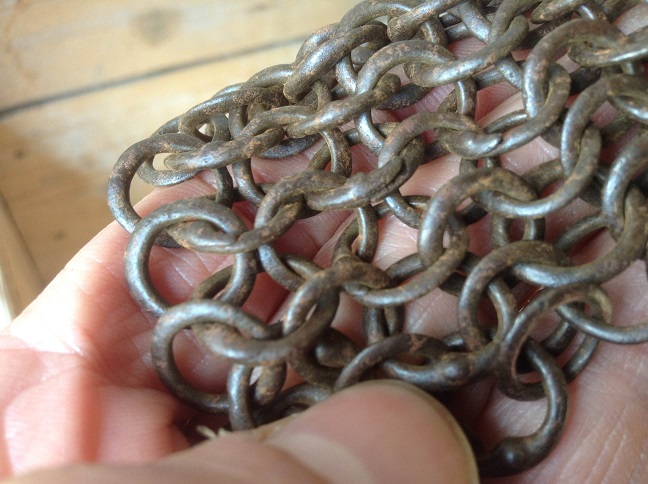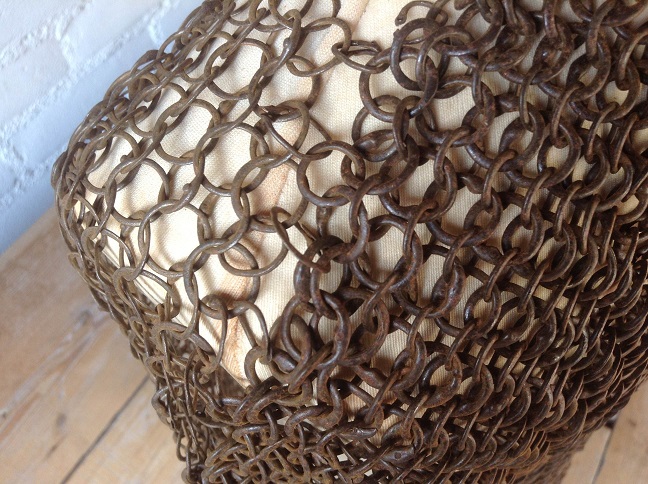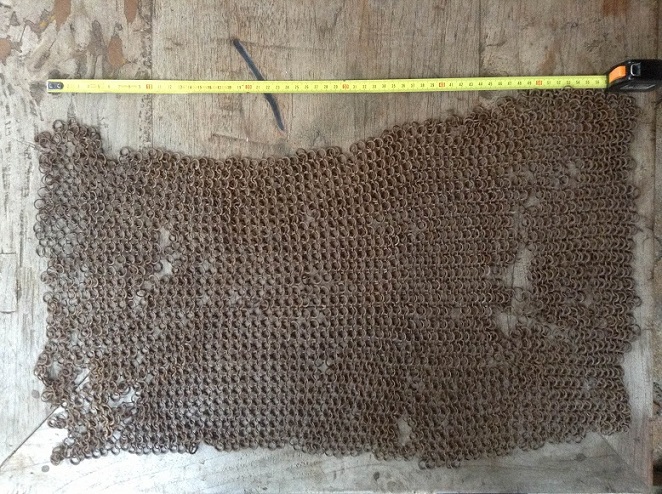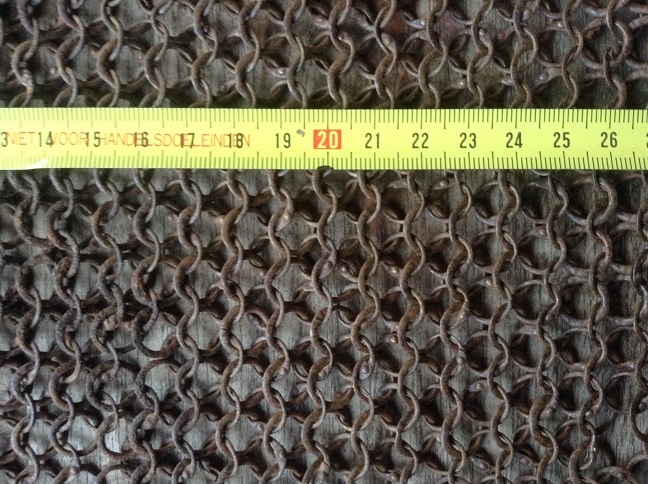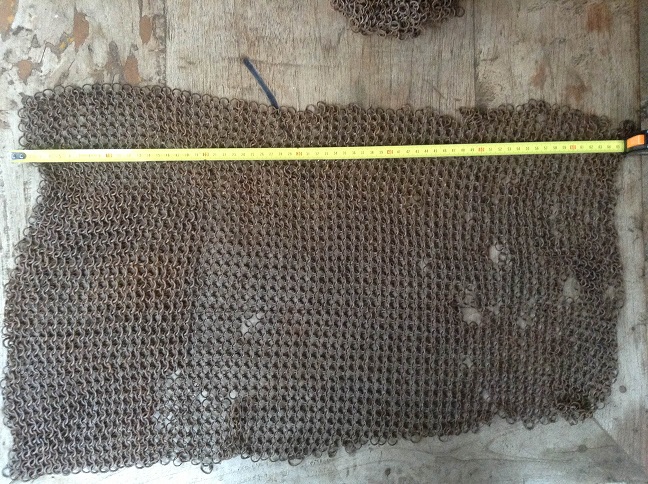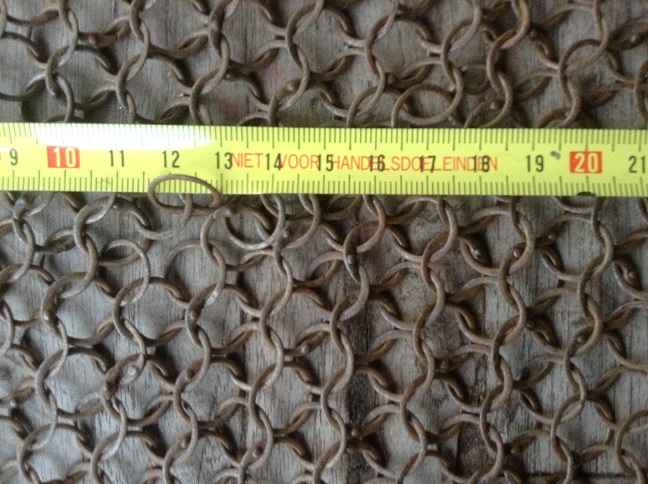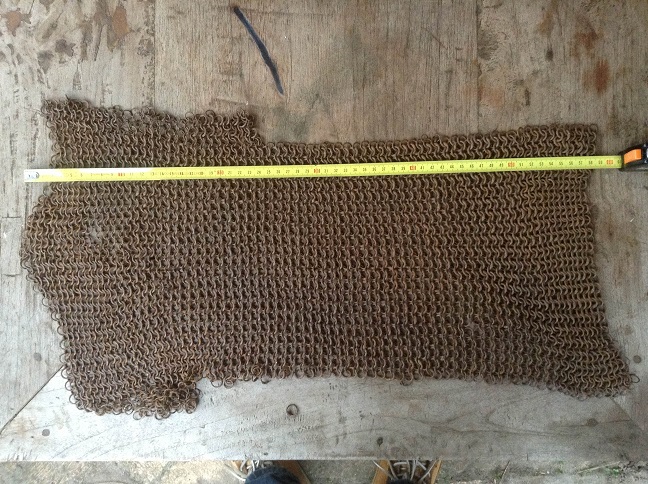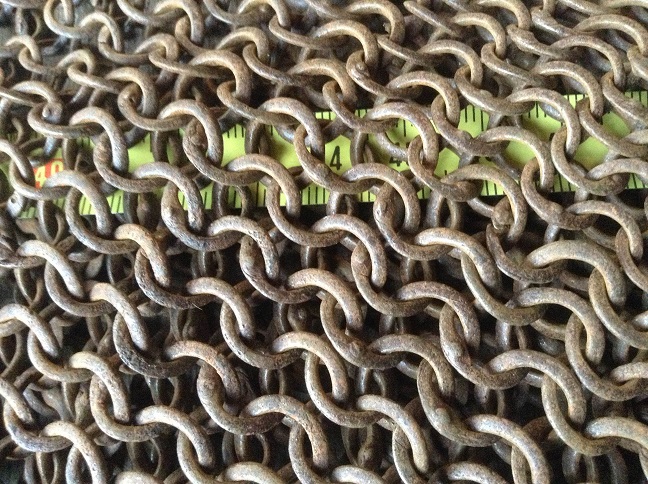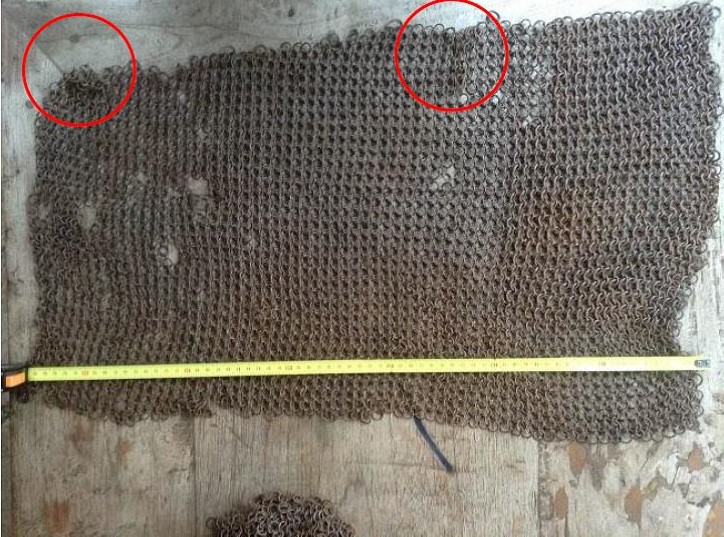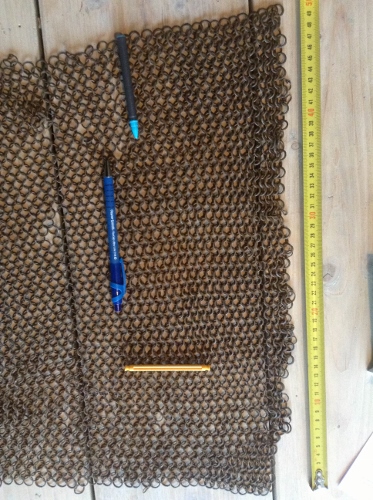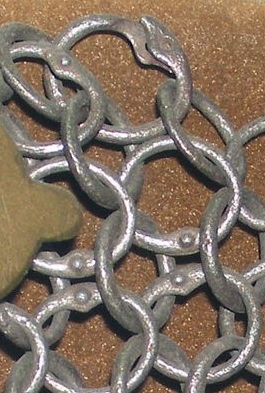Posts: 1,303 Location: Jackson, MS, USA
Mon 24 Feb, 2014 10:33 pm
You may be able to add slightly to the value by identification. Would you rather have a "scrap of mail measuring 30cm x 60cm" or "Left breast and back of an Indo-Persian mail shirt"?
Regarding your second sample: If these are expansions in the red circles, it seems likely the heavier mail on the left side is the left or right breast of a shirt. The outside would have the protruding rivet heads while the inside is relatively flat. The heavier mail at the top would be towards the shoulders. The lighter mail would be on the back, and the expansions over the hips.
The method of expansion probably beginning 10 or 12 rows up from the bottom.
[ Linked Image ]
 Attachment: 97.23 KB
Attachment: 97.23 KB
